Across the world, there are many kinds of noble folk, and while it may not be as vast as the Elven nobility, as historically significant as Draconian nobility, as wealthy as Mammen nobility, or anywhere near as powerful as Korvian nobility, Geltic nobility is essential in the hierarchy of the Kingdom of Man and how it’s run.

Gellark Lionrage by Jarhed
Due to the relatively new nature of the Kingdom of Man, most of the oldest noble families can claim similar, if not shared, ancestry to the royal family that holds the throne. The Regalcrests did this first when the one and only Lionrage King disappeared, saying they were his cousins with no true claim. When the Regalcrests were overthrown, the Forestarm family claimed a distant relation, and while proof of family trees has been provided, there are many questions as to the legitimacy of such “evidence.” Still, even the minor kingdoms that popped up during the fracture of the Age of Plague were ruled over mostly by nobles who claimed royal blood, and other families do so just for renown or bragging rights.
Those outside of the Kingdom of Man have proposed that the major issue with the Kingdom's political structure is its inclusion of nobles holding such great and varied power. The system itself has caused trouble since its inception, constantly leading to treason, uprisings, and attempted (or successful) coups. If there was no nobility, things may be easier for the Kings, but that would leave governing the sprawling Kingdom entirely to the King as well, and for that, no one has taken this seriously.
Some peasants in the Kingdom of Man believe firmly in the idea as well, wanting a say in the governing of their land, but that, too, is ignored. They are neither noble nor royal, and so their voices are not taken seriously in matters of governance and nobility.
But what makes one a noble, and what distinguishes a noble from a royal?
The Titles of Nobility
There are five ranks within the Geltic nobility. These are Duke/Duchess, Marquess/Marchioness, Earl/Countess, Viscount/Viscountess, and Baron/Baroness. Below, the distinctions will be further explained.

Timar Forestarm by Jarhed
Many of the highest nobles are also royal in some senses, as Dukedoms (the highest among the Human nobility) can and often are granted to royals who are not likely to ascend to the throne.
Duke
Dukes, rulers of duchies, are the highest of the Geltic nobility, and for this reason there are far fewer Dukes than any other title.
Some Dukedoms have been given exclusively to royals. For instance, following the usurpation of the Regalcrest family and their restoration to nobility after the death of Timar Forestarm, the eldest Regalcrest was always appointed Duke of Erast. Other royal examples include the Duke of Vitroveil, a ceremonial title (as no one would dare try to rule the Lawless City) given to the Crown Prince of Nerodil to symbolize he is now trusted with inheriting the throne.
Others, however, come about from influential families. The Mournsworths, for instance, maintained the title of Dukes of Martinau because of their role in founding the city until their family’s involvement in the Grand Crowning, at which point the family was relegated to honorary nobility at best before fully fading into obscurity. The Proudbearers, on the other hand, have held the Dukedom of Gremont since the city’s founding, and stand as one of the most prominent noble families.
Marquess
A position held by those who are otherwise called “the Most Honorable” when they are addressed, Marquesses hold land called a “March” which is, traditionally, on the borders of the Kingdom. Those that held the position of Marquess, or Marchioness for women, were meant to be the most brave of the nobility, standing tall against all possible invading forces.
The Dohdz family, who have stood as the Marquesses of the eastern border for much of Geltic history, are the most prominent to hold the title. It is almost always this family who must resolve any conflicts and keep up relations with the Jihdi Empire.
The Skullbluff family, who were entirely wiped out by the freedom fighter Kathleen Ramone, were Marquesses once of the land around the central river of Elone, holding land and a castle that was taken from them by Elves and, later, the Cragspear Bandits. They were relegated in the short time they still existed to Landed Gentry in Nerodil before all dying out.
Earl
The power of an Earl is in the amount of land they have, and so the Earls who claim large swaths of land (particularly out in the western plains of the kingdom) end up mostly being the more prominent Earls.
Earls hold much of the land within the kingdom itself, with castles built throughout the Kingdom of Man. At times there have even been too many Earls at a time, amassing a great deal of power (which in part led to the splintering of the Kingdom of Man during the Age of Plague). During these times, the King has had to fight against the Earls and dismantle their castles.
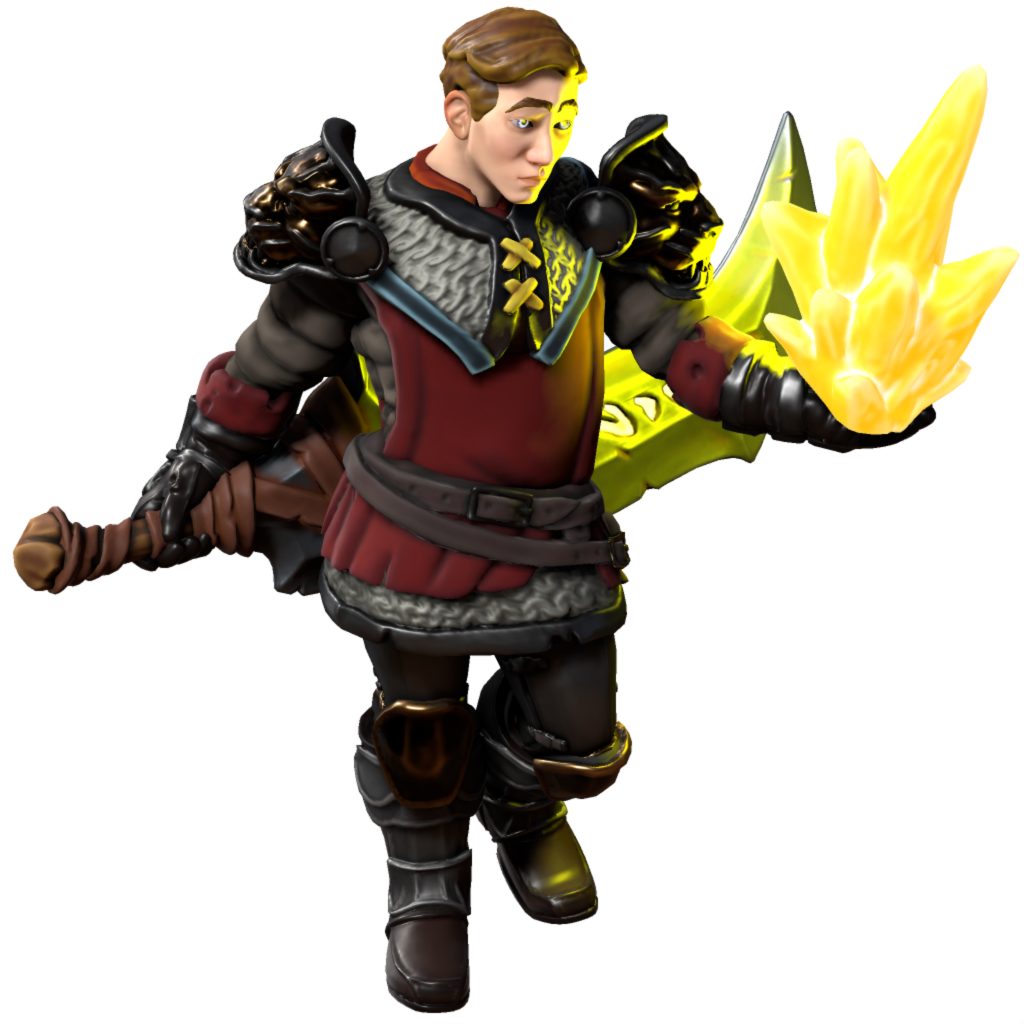
Rabred Rozen by Jarhed
The Lioneyes family are Earls, with a large castle in the Eastern Reaches, overlooking Ortoise. This castle is said to have been built by Elven royalists who wished to taunt the fallen kingdom of the Exiles, and for this reason many say there is an “evil energy” radiating from the very walls of the castle.
Despite their prominence in the social and political scene of Nerodil, the Rozen family are no more than Earls (and lesser Earls, controlling only a few acres outside of Nerodil). They have become, thanks to their continued role in court, the very pinnacle of Earldom, but on paper they have no more power than other Earls, even less power if one were to look at official documents and land determinations.
That being said, Earls have once again been rising in power, with some believing them to generally have more influence than most Marquess families in the modern age.
Viscount
The only one of the noble titles to be near-exclusively appointed rather than hereditarily passed down, Viscounts are considered a much lower title than Earls, Marquesses, and especially Dukes among noble circles, though they are often the most respected by commonfolk, as Viscounts are generally raised from commonfolk (if they were not knights, Landed Gentry, or non-firstborn nobles already), and because they are the only nobles (aside from the first in a family to be appointed to a position of nobility) who must earn their titles.
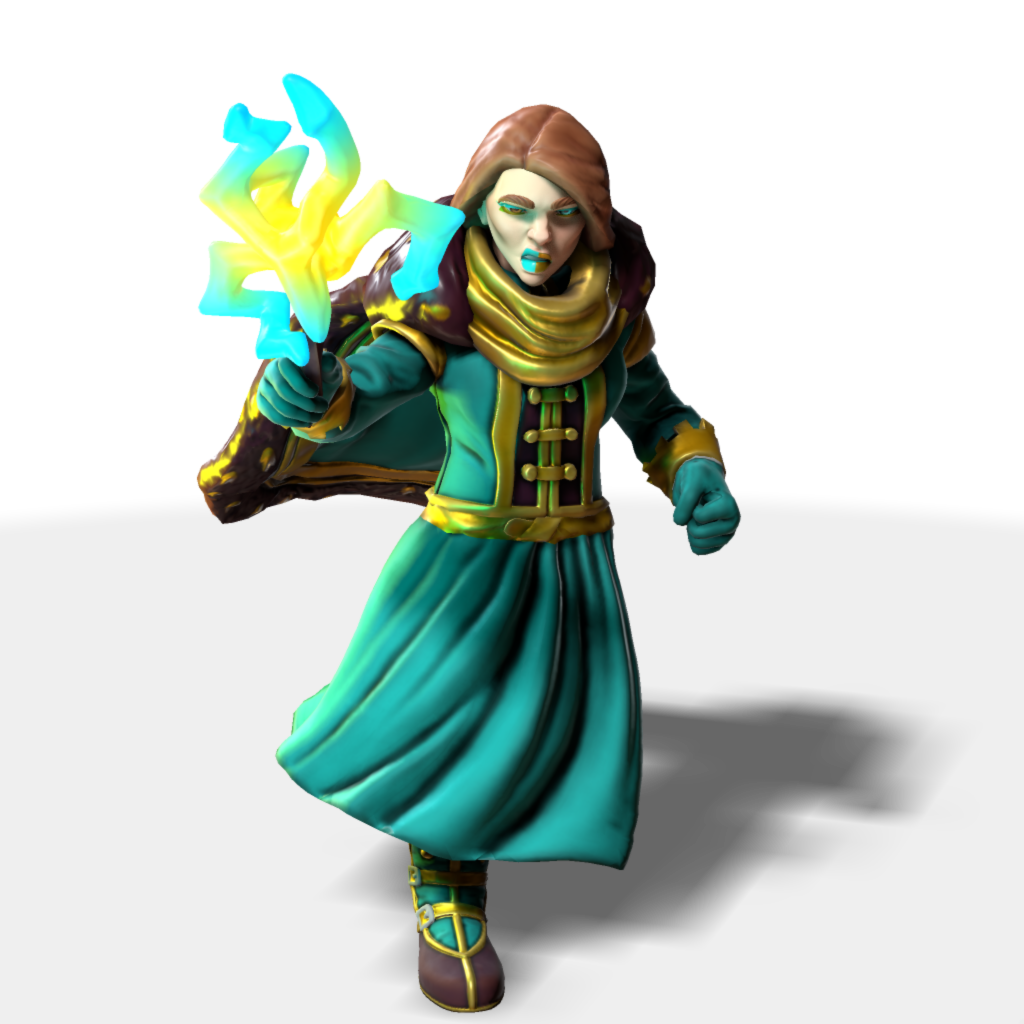
Fermi Chuv by Jarhed
The title of Viscount can be awarded for any action that the King deems worthy of it, and often Dukes or Marquesses may even suggest subjects within their domains who may have earned the honor. This not only grants them more power, but it often gives them a close ally to work with in governing their Dukedom/March.
Their land is more ceremonial than others, and while they do have authority within the territory, few Viscounts ever exercise that authority. More often, Viscounts enjoy the luxury they are given with their title, leaving governance to local mayors and other officials, even local Barons when there are those to delegate power to.
The very first Viscount position was granted to one of the great heroes of the latter end of the Age of Heroes, Guii Pondfist, who summoned a Demon Lord in Aurilet and used that power to protect Gremont from divine-infused natural disasters. While he never truly held the title, dying immediately after the ceremony, the heroic spirit of Pondfist is still said to watch over all those who achieve as he did, becoming Viscount.
One prominent Viscount is the mage Fermi Chuv, the youngest Viscount in history, promoted to the position at the age of 16 thanks to her work in single-handedly cleaning the sewers of Roaroux with nothing but her intellect and attuned magical techniques, at a time when the sewers had clogged and threatened to sink the city and drown all of its residents.
Baron
With only minor swaths of land, called baronies, under their jurisdiction, Barons are the lowest among all Geltic nobles. The first in a line of Barons is appointed by royal decree, with some higher nobles calling Barons “Paper Lords.” Another issue that comes with this is that baronies can be taken away, and Barons can be stripped of their title. A family that has disgraced itself while holding a Dukedom may be forced to atone or pay a hefty sum to make up for what it has done, but a family who has done the same with a barony will most certainly lose all hereditary rights for said family in the future.
Many Barons were first appointed alongside the gift of land for their military service. In the early days of the Kingdom of Man, a great many baronies were handed out to exceptional soldiers, but as the centuries passed, the amount of new Barons dwindled greatly, as there was little land to give and fewer who earned the honor.

Tothra Staz by Jarhed
The Kilyurn family, who were the most active in the slave trade, were Barons, and upon their extermination, the tainted baronies associated with them were handed over to the Staz family thanks to the dutiful military service of Tothra Staz, known as the True Knight of Justice, despite her exile, attempts from the crown to have her killed, and attempts to frame her for a myriad of crimes. Tothra Staz herself was also honored as a Viscountess, though this of course did not pass down to her family like the barony did.
Landed Gentry
Much of the nobility within city limits like Nerodil’s Reinnad Park are Landed Gentry (save for the homes of some local lords of higher ranking like the Rozens) rather than any of the other noble titles above. They hold land within the city, or perhaps even outside of its immediate walls, but do not hold official high titles like others do.
The Landed Gentry is a form of nobility that was inspired by that of the Elves and Draconians, brought over to the Geltic culture by wealthy Gelts. Some known families of Landed Gentry include the Timfs, the Kerntens, and the Palemarks.
Lands and Titles
While royals have the legal right to all of the Kingdom of Man, nobles are either granted land or inherit it. This land (be it a duchy, march, county, or barony) is the realm of the noblemen, their source of income and region of influence.
The smaller distinctions (baronies/counties) exist within the domains of the higher lords. The land of a Baron is a minor region within a Dukedom or a March, and thus a Baron must be subject to the whims of their respective Duke or Marquess, and any decision they make with their land can be overruled by a superior noble in the region, or the King.
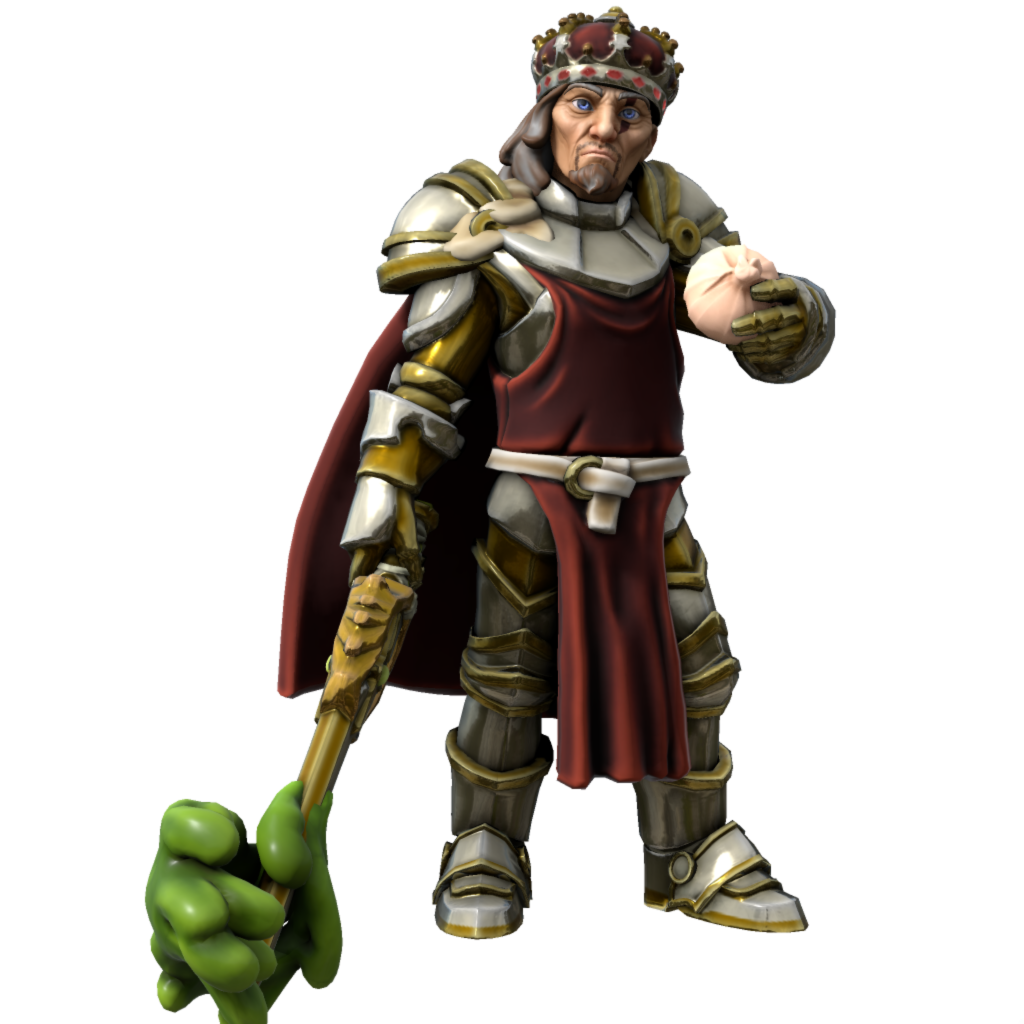
King Vamar Forestarm by Jarhed
In terms of hierarchies within the ranks, that comes down first and foremost to the age of the title. The older a noble family, the more sway they are meant to have within a rank, meaning a Duke from an ancient noble family has more sway than a newly appointed Duke. Age of title does not, however, break hierarchical lines, meaning that an older Viscount does not have more sway than a newly risen Earl.
Appointment
Nobles are appointed in different ways, and for different reasons. Titles are generally only given out when they are emptied, though some (like Viscounts) are given when one deserves them, rather than when one is available.
Dukes are generally raised up from lower positions of nobility (Marquesses or, more often, Earls) when a Dukedom is emptied, which happens if a noble family either dies out, is bankrupted, exiled, or must otherwise leave their position. When they are appointed, it is a national event (for the nobility, of course. Peasants within the duchy will find a parade through their land, but other peasants will see no benefit or change other than the absence of their own local lords for the ceremonies). It is always one of the largest ceremonies of an era when a new Duke is appointed or when the title is inherited, lasting at times for weeks on end. Everything Dukes do is, generally, very ostentatious, and their first event must always remind people of their power. An appointed Duke is given a ceremonial sword and a set of letters stamped with the royal seal.
Marquesses often have a twofold ceremony, first being one nearly rivaling the scale of a Duke’s appointment, while the latter half consists of the new Marquess, alongside whatever lords desire to join them, traversing their March and touring the fortifications to ensure they are up to the standards of the Marquess and, if they are not, that the Marquess knows what must be fixed. Their appointment, otherwise, is exactly like that of a Duke. Marquesses, too, are given letters with the royal seal upon their appointment.
Earls have the smallest of the appointment ceremonies, as they must throw it themselves in their castles, whereas otherwise the King himself throws the ceremony. They must prove their worthiness with the ceremony, and a failed ceremony has often ostracized Earls in the past. A ceremonial sword is fastened to an Earl's belt, alongside the placing of a cape and circlet upon the new Earl.
Viscounts, as mentioned above, are always appointed and never inherited. They have grand ceremonies that double as celebrating their great deed as well as their new title, and often higher lords attend these ceremonies to mingle with the often popular and famous new noble. There is no symbollic placing of anything on a new Viscount, nor do they get sealed letters.
Barons are honored not with a ceremony, but instead with a sheet of paper delivered to them, informing them of their new position, land, and power. They are usually summoned to meet with the King (and the superior lords in their region) to discuss this, but there is no grand ceremony.
Noble Children
The children of noblemen are often considered part of the gentry without an official title, though the children of Dukes, Duchesses, Marquesses, and Marchionesses are made honorary nobles of the next lowest level (with Dukes eldest children becoming Marquesses, Marquesses eldest becoming Earls), with small chunks of their parents’ land under their control that, until they are of age, are still watched over by their parents or someone else is appointed pro tempore to rule for the youths. The eldest grandchildren of a Dukes and Marquesses eldest child are the only nobles who “inherit” the title Viscount, but it is only while their grandparent still holds the title of Duke or Marquess.
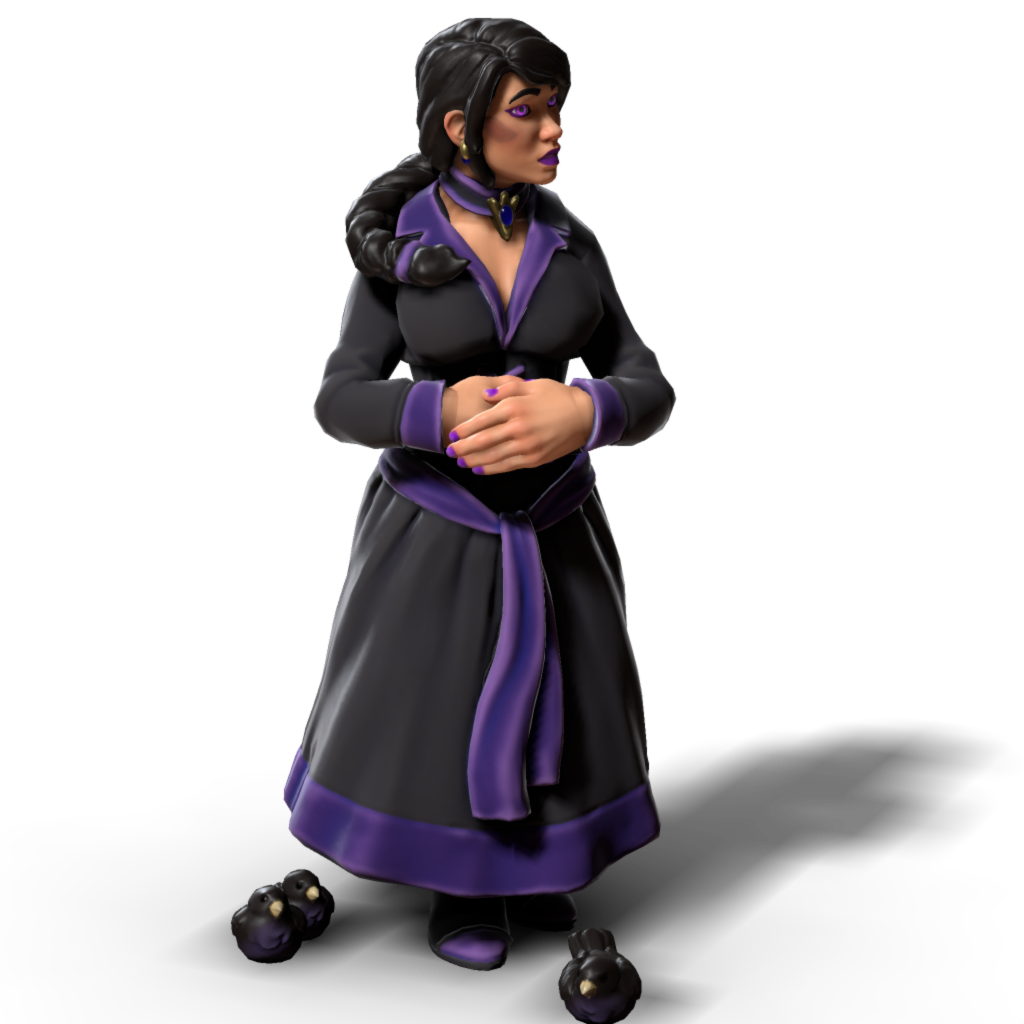
Seri Staz by DragonboiNalrik
Primogeniture dictates that the eldest child inherits most lands and titles of nobility in Geltic culture, though the specifics depends on the regions, titles, and families. Viscount titles do not pass to anyone, for instance. Most of the lands east of the central river of Elone allow the eldest female child to inherit, while the western territories have traditions that, generally, only include male heirs. This is associated with the fact that, in the east, the teachings of the Goddess of Civilization, Athena, have influenced their practices, while in the west the words of Izanagi, distorted by Kamejin monks who traveled to the western regions, have shaped their way of life. Others consider that it’s the influence of Goblin and Halfling traditions from Tohil that influenced the male-dominated western Geltic cultures. Whatever the case, there is (as with many Geltic traditions) a distinct split along the center of the kingdom.
Multi-Titled Nobles
There are many nobles who have multiple titles. Dukes are often also Barons of certain areas within their domains, as is the same with Marquesses and even some Earls. As it is still within their own land, there are no laws against this (though it is far more common within the western half of the kingdom), and they can then, with permission of the King, bestow these titles on new nobles when they see fit to do so. Most often, they give the positions to their children, siblings, or cousins, keeping the land and titles within their family.

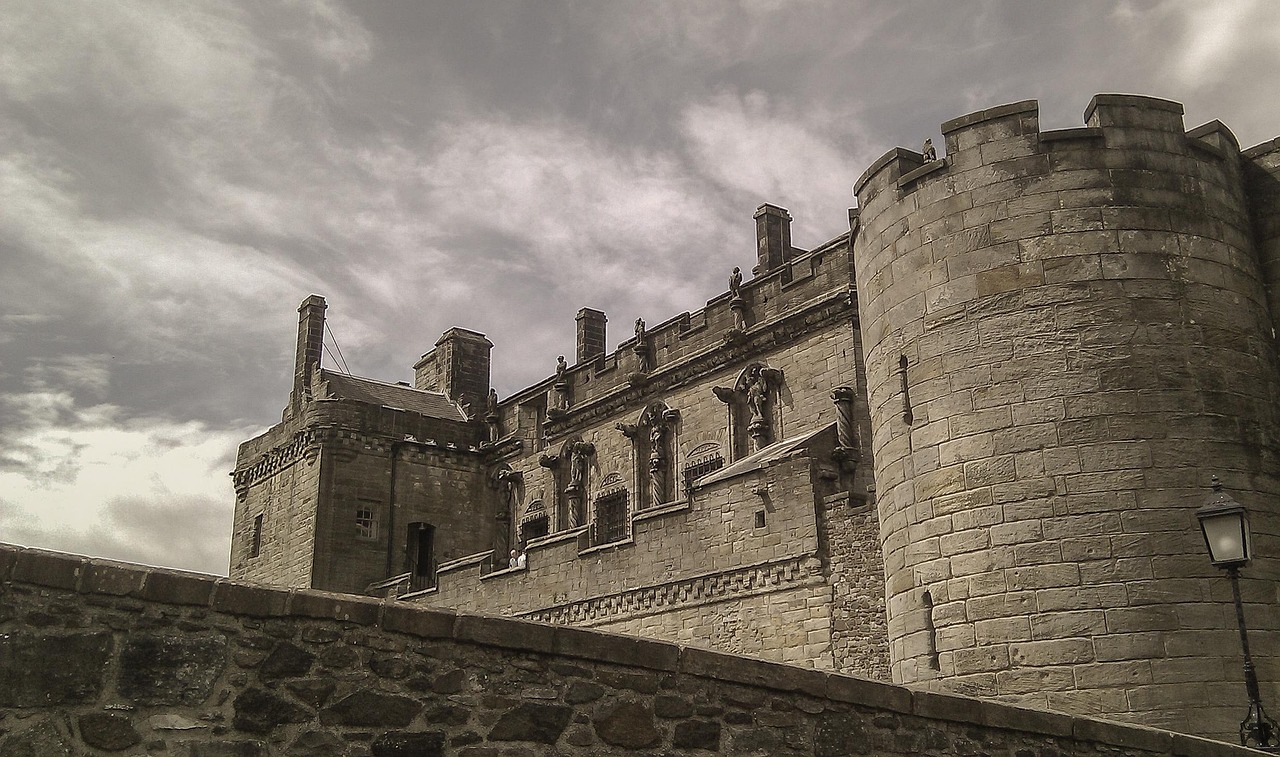








Comments